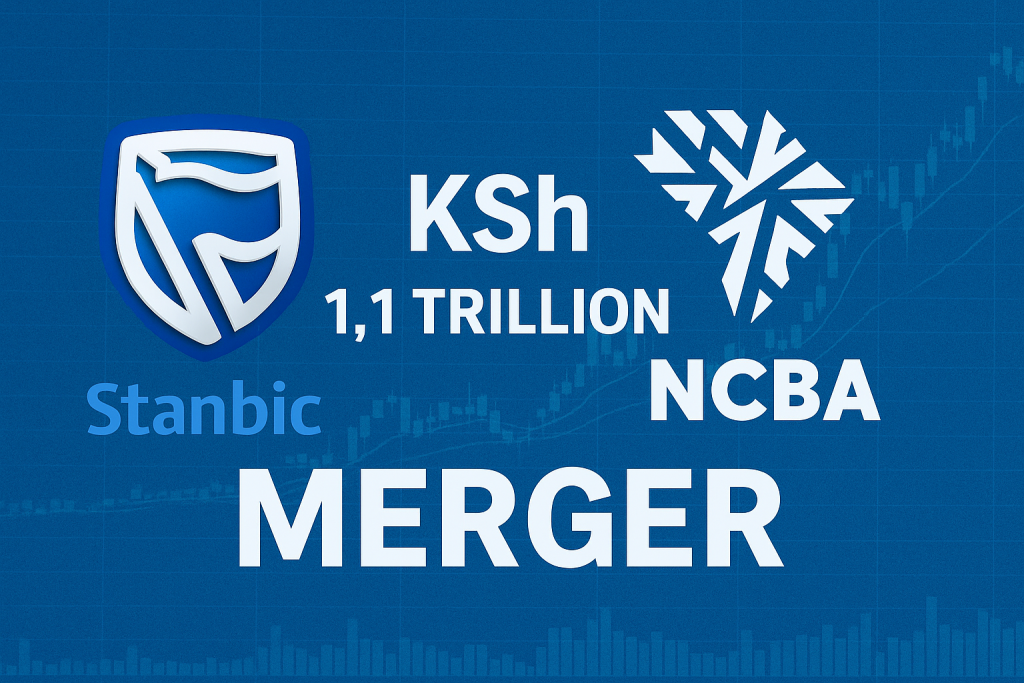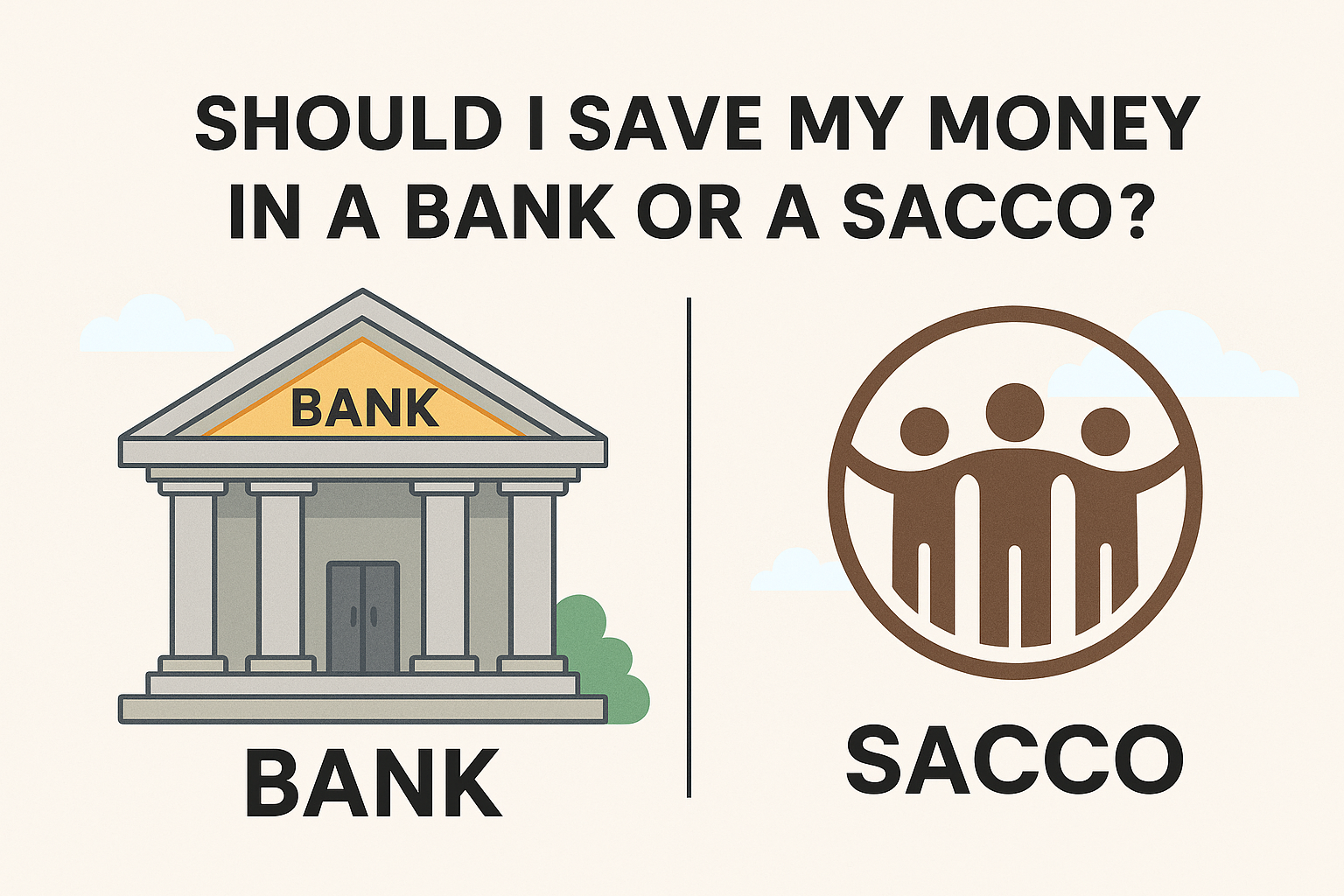In October 2025, reports surfaced that Standard Bank Group’s Kenyan arm, Stanbic Holdings, is in advanced talks to acquire NCBA Group in a deal that could reshape Kenya’s banking landscape.
If consummated, the merger would produce a combined entity with assets of roughly KSh 1.1 trillion (about US$8.5 billion), according to filings and market reports.
Why is this significant? For starters, it would rank the merged bank as the third-largest lender in Kenya by assets, placing it behind only Equity Group Holdings Plc and KCB Group Plc.
Moreover, the deal signals a new phase of consolidation in Kenya’s banking sector — one driven by regulatory pressure, rising competition, digital disruption and the need for scale.
In this blog we unpack what’s going on, why it matters, what the implications are (for banks, customers, and investors), and what risks lie ahead.
What We Know So Far
The Players
- NCBA Group Plc: A Kenyan-based banking and financial services group with operations in Kenya, Uganda, Tanzania, and Rwanda. The result of the 2019 merger of NIC Bank and Commercial Bank of Africa (CBA), NCBA has built up digital-first credentials (via products like M-Shwari) and a regional footprint.
- Stanbic Holdings Plc / Standard Bank Group: Stanbic is the Kenyan banking unit of South Africa’s Standard Bank Group — Africa’s largest bank by assets. Standard Bank reportedly owns about 75 percent of Stanbic’s Kenyan operations.
What’s Being Discussed
- Standard Bank, via Stanbic Kenya, has received internal approval to enter discussions with NCBA for an acquisition or merger.
- The deal size: The merged entity would bring together assets of about KSh 1.1 trillion, putting it into Kenya’s top three banks.
- The rationale: For Standard Bank, this is a key step in its East Africa strategy — it had long signalled interest in acquiring a Kenyan bank by 2025. For NCBA, the partner could provide greater scale, more capital flexibility, and access to Standard Bank’s continental networks.
- The market reaction: NCBA shares jumped to a new high — they rose to KSh 75.25, up about 8.3 percent on merger speculation.
- The regulatory context: Kenya’s banking regulator has been encouraging consolidation and higher capital thresholds. A deal of this size would require scrutiny by the Central Bank of Kenya (CBK), the Capital Markets Authority (CMA), and the Competition Authority of Kenya (CAK).
What’s Unique
The prospective merger is not just about scale — it combines a bank with strong digital retail credentials (NCBA) with one backed by a large international parent with deep capital and corporate banking expertise (Standard Bank/Stanbic). It may also mark a shift in power dynamics: foreign-owned banks re-entering the top echelons of Kenya’s banking sector, which has for years been dominated by local players.
Why This Matters
For the Banking Sector
- Consolidation and Scale: Kenyan banking has been under pressure. Slower credit growth, rising cost of capital, and tougher regulations on capital and liquidity mean traditional mid-tier banks need scale to thrive. A merged NCBA-Stanbic would be stronger in this regard.
- Digital Transformation: NCBA has invested heavily in digital platforms and retail innovation (such as M-Shwari), while Standard Bank brings global risk management and corporate banking capabilities. Together they could accelerate digital banking in Kenya and across the region.
- Market Repositioning: With assets of about KSh 1.1 trillion, the merged entity would challenge established leaders in Kenya. That may trigger further consolidation as other banks rethink their competitive position.
- Regional Implications: The deal strengthens Standard Bank’s footprint in East Africa and may affect how cross-border banking evolves. Countries like Uganda, Tanzania, and Rwanda could see increased integration of operations across borders.
For Investors
- Speculation Surge: The sharp rise in NCBA’s share price reflects investor optimism about the merger’s potential.
- Value Creation Potential: If the merger delivers efficiencies — cost savings, higher revenue growth, better risk management — shareholders could benefit.
- Caution Required: Mergers often carry execution risk. Valuation premiums, cultural integration, regulatory delays, and synergy realization are uncertain.
For Customers and the Economy
- Potential Benefits: A larger, better-capitalised bank could offer more products, improved digital services, enhanced cross-border banking, and stronger stability in times of stress.
- Potential Risks: Consolidation might reduce competition, impacting pricing of loans, deposits, and product diversity.
- For the Economy: A stronger banking sector supports credit growth, trade, and investment — key for Kenya’s economic ambitions.
What’s Driving the Deal
Regulatory and Competitive Pressure
Kenya’s banking regulator has nudged the sector toward fewer, stronger banks with higher capital buffers and more robust governance structures. The prospect of a KSh 1.1 trillion merger signals how banks are responding to this push.
Desire for Scale and Diversification
NCBA faces the challenge of scale, particularly in corporate banking and regional reach. Standard Bank’s interest lies in gaining a meaningful foothold in Kenya — the region’s financial hub — via an established institution.
Digital and Retail Banking Momentum
NCBA’s digital credentials make it attractive in a market where mobile banking and fintech partnerships are key growth areas. For Standard Bank, merging with NCBA accelerates entry into fast-growing digital segments.
Strategic Regional Play
Standard Bank’s multiple East African operations stand to benefit. By securing Kenya through NCBA, it can integrate regional operations more effectively and leverage cross-border client networks.
Potential Synergies and Benefits
- Expanded Customer Reach: NCBA’s retail base plus Stanbic’s corporate clientele can produce a more diversified portfolio.
- Cost Efficiencies: Shared branch networks, technology platforms, and vendor contracts can be streamlined to reduce expenses.
- Technology and Data Advantage: Combining NCBA’s mobile data with Standard Bank’s risk expertise could lead to smarter lending, especially to SMEs.
- Regional Scale: Unified operations across Kenya, Uganda, Tanzania, and Rwanda may strengthen treasury and forex management.
- Stronger Capital Base: The larger bank would have more lending capacity and resilience during economic headwinds.
- Improved Product Offering: Expect a wider range of digital wallets, mobile loans, corporate trade financing, and asset finance services.
Possible Risks and Challenges
- Execution Risk: Integrating two large banks means merging systems, staff, and cultures — often a complex process.
- Regulatory Hurdles: Approvals from the CBK, CMA, and CAK will take time and may come with conditions.
- Valuation and Costs: Paying a premium for NCBA shares could strain short-term returns if synergies take long to realise.
- Market Reaction: Managing shareholders, customers, and employee expectations will be critical.
- Technology Integration: Aligning NCBA’s digital platforms with Stanbic’s legacy systems may prove difficult.
- Competitive Pressure: Rivals like Equity and KCB could react aggressively with new products and pricing strategies.
- Economic Context: Inflation, currency depreciation, and slow credit uptake could test even a stronger bank.
What It Means for Different Stakeholders
Banking Customers
Customers could see improved services and broader access to digital banking. However, fewer banks might also mean reduced competition and less bargaining power. Keep an eye on product pricing, interest rates, and changes in account terms once integration begins.
Investors
Investors may gain from short-term price appreciation and long-term growth if the merger succeeds. However, caution is advised — regulatory setbacks or poor integration could erode value quickly.
SMEs and Businesses
A more capitalised bank could enhance access to credit, trade financing, and cross-border payment solutions. SMEs may benefit most if the merged bank expands its digital lending platforms.
Timing and Next Steps
As of late October 2025:
- Neither NCBA nor Stanbic has issued a formal statement confirming merger details, though both acknowledge ongoing strategic reviews.
- Regulatory bodies will likely review the transaction’s potential market dominance, job impact, and consumer protection concerns.
- The integration process, once approved, could take 12 to 18 months.
- The banking environment — including Kenya’s interest-rate policy and regional economic performance — will influence the merger’s eventual success.
Strategic Implications for Competitors
The proposed merger sends a strong signal to Kenya’s mid-tier banks:
- Scale or Specialise — banks must decide whether to grow through mergers or focus on niche segments.
- Digital is Non-Negotiable — NCBA’s mobile-banking success underscores that technology is now a competitive necessity.
- Regional Positioning Matters — Kenya’s top banks are expanding into Uganda, Tanzania, Rwanda, and DRC to diversify risk.
- Efficiency Will Define Winners — Cost management and integration efficiency will separate leaders from laggards.
- Regulation Will Tighten — Expect stricter capital requirements and oversight from CBK as the sector consolidates.
The Bigger Picture
This potential merger marks a new era for Kenyan banking:
- From Fragmentation to Consolidation — Fewer, stronger banks are emerging.
- From Local to Regional — Pan-African players are re-establishing dominance in Kenya.
- From Branch to Digital — Customer engagement is shifting rapidly toward online and mobile platforms.
- From Traditional to Innovative — New products and fintech partnerships are redefining service delivery.
Key Takeaways
- The proposed NCBA–Stanbic merger could create Kenya’s third-largest bank by assets, worth about KSh 1.1 trillion.
- It reflects the broader trend of consolidation, digital transformation, and regional integration.
- Customers may enjoy better digital experiences and wider access to finance, though competition could narrow.
- For investors, the deal represents both opportunity and execution risk.
- For Kenya’s economy, a stronger, well-capitalised bank could stimulate lending, trade, and investment.
What to Watch
- Regulatory Approvals — Will CBK, CMA, and CAK clear the deal without conditions?
- Official Announcement — The exact structure (acquisition, share swap, or merger of equals) will determine valuation and control.
- Market Reactions — Share prices of NCBA, Stanbic, and rivals will signal investor sentiment.
- Integration Plan — Technology, staffing, and governance frameworks must align for success.
- Competitor Moves — Expect defensive mergers or partnerships among mid-tier banks.
- Customer Impact — Service continuity, branch access, and digital platform stability will matter most during transition.
Final Thoughts
Kenya’s banking sector stands on the brink of transformation. A Stanbic–NCBA union could redefine market power, accelerate digital innovation, and push smaller banks to reconsider their strategies. Yet, execution risk remains — merging two strong but different institutions is never easy.
For customers, this could mean stronger digital products, more stability, and wider reach. For investors, the opportunity lies in betting on execution excellence. For competitors, it’s a wake-up call: adapt, partner, or risk being left behind.
This isn’t just another corporate merger; it’s a turning point in Kenya’s financial history — a signal that the race for scale, technology, and regional influence is far from over.



